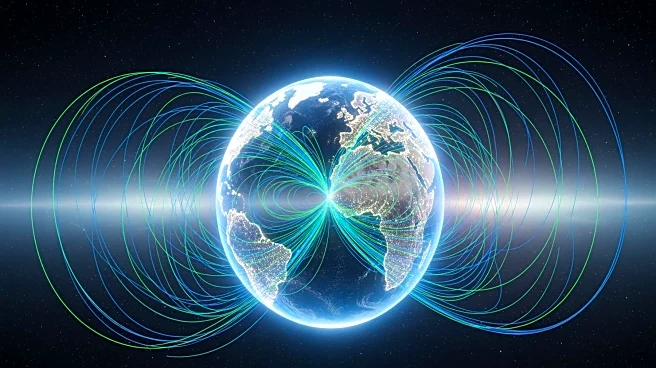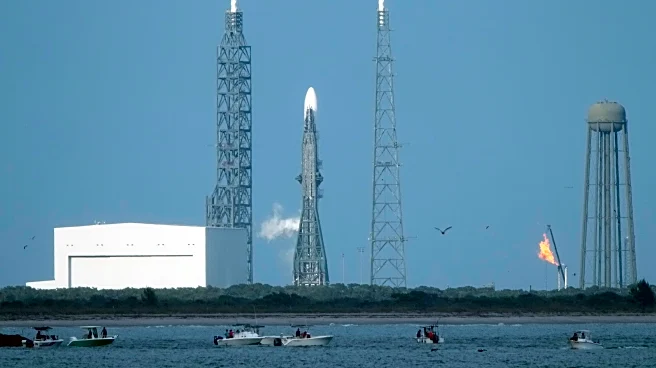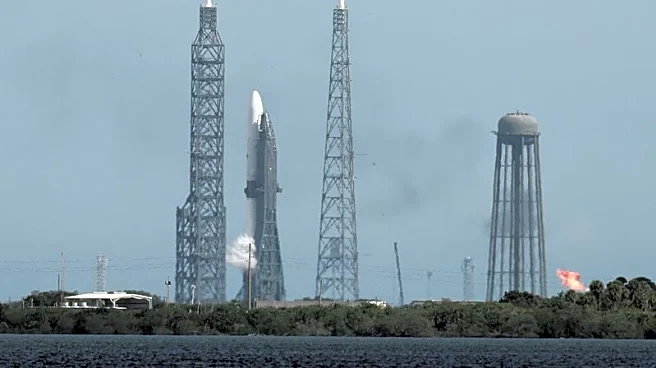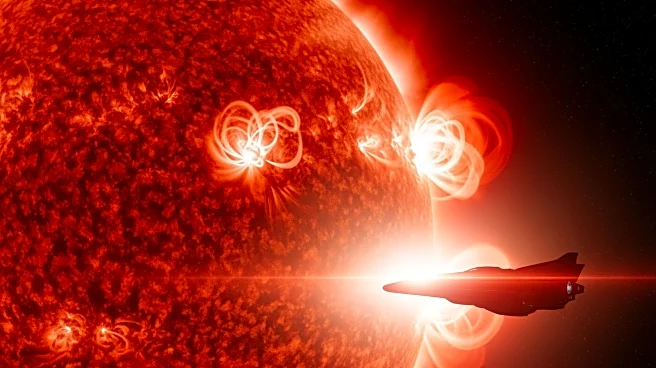What's Happening?
Researchers have identified a surprising reversal in Earth's magnetic field, challenging long-standing models. The study, led by Yusuke Ebihara from Kyoto University, reveals that the magnetosphere's electric charge distribution is opposite to previous
beliefs. Traditionally, the magnetosphere was thought to have a positive charge on the dawn side and a negative charge on the dusk side. However, new data from NASA's Magnetospheric Multiscale mission and computer simulations show the morning side carries a negative charge, while the evening side is positive. This discovery refines the understanding of electric and magnetic forces in Earth's space environment, potentially improving space weather forecasting and technology protection.
Why It's Important?
The findings have significant implications for space weather forecasting and the protection of technology both in orbit and on the ground. Understanding the magnetosphere's behavior is crucial for predicting space weather events that can disrupt satellites, power grids, and communications. The reversal in charge distribution suggests that energy from the sun interacts with Earth's magnetic field in more complex ways than previously thought. This could lead to better models for predicting solar storms and auroras, ultimately aiding in the development of strategies to mitigate their impact on technological infrastructure.
What's Next?
Further research is likely to explore the implications of this discovery on existing space weather models. Scientists may conduct additional simulations and data analysis to understand the dynamics of charged particles and their interaction with Earth's magnetic field. This could lead to advancements in forecasting techniques and protective measures for satellites and other technologies vulnerable to space weather. Collaboration between international research teams and space agencies may be necessary to fully integrate these findings into global space weather prediction systems.
Beyond the Headlines
The study highlights the dynamic nature of Earth's magnetosphere and its influence on space weather. It underscores the importance of continuous monitoring and research to adapt to new scientific insights. The reversal in charge distribution may also prompt a reevaluation of other established theories in geophysics and space science, potentially leading to broader shifts in understanding Earth's interaction with solar energy.















